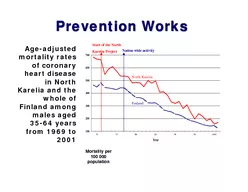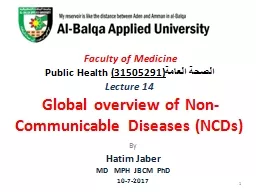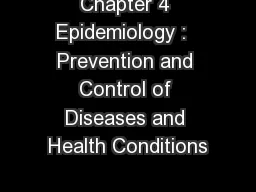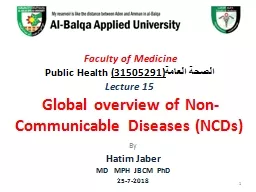PDF-Public Health Medicine Successful prevention of noncommunicable diseases year experiences
Author : giovanna-bartolotta | Published Date : 2014-11-16
The successful experiences emphasize the need for theory based sustained activity within a national policy framework The paper discusses not only the marked changes
Presentation Embed Code
Download Presentation
Download Presentation The PPT/PDF document "Public Health Medicine Successful prev..." is the property of its rightful owner. Permission is granted to download and print the materials on this website for personal, non-commercial use only, and to display it on your personal computer provided you do not modify the materials and that you retain all copyright notices contained in the materials. By downloading content from our website, you accept the terms of this agreement.
Public Health Medicine Successful prevention of noncommunicable diseases year experiences: Transcript
Download Rules Of Document
"Public Health Medicine Successful prevention of noncommunicable diseases year experiences"The content belongs to its owner. You may download and print it for personal use, without modification, and keep all copyright notices. By downloading, you agree to these terms.
Related Documents














